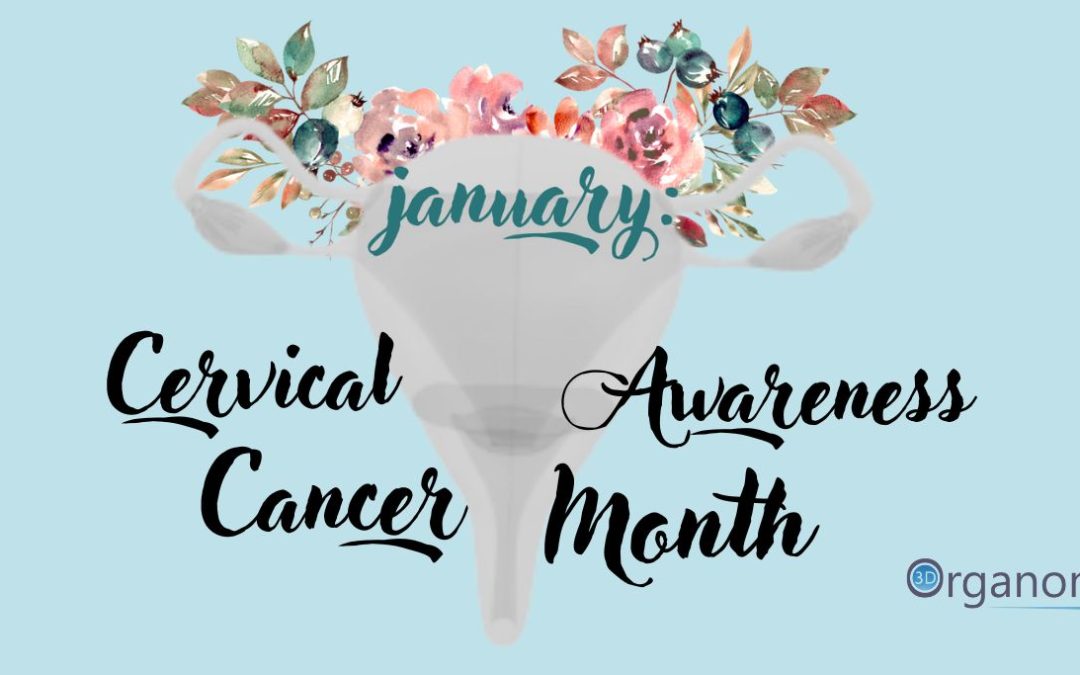January: Cervical Cancer Month
Informed. Screened. Vaccinated.
January is Cervical Cancer Awareness Month raising awareness about cervical cancer and HPV vaccination.
Cervical cancer is the growth of abnormal cells in the lining of the cervix. Notably, the most common cervical cancer is squamous cell carcinoma, accounting for 70% of cases. On the contrary, adenocarcinoma is the less common (about 25% of cases) and most difficult to diagnose, because it starts higher in the cervix.
The most common Cervical cancer symptoms are:
– vaginal bleeding between periods
– menstrual bleeding that is longer or heavier than usual
– pain during intercourse
– bleeding after intercourse
– pelvic pain
– a change to the quality and quantity of the vaginal discharge, such as more discharge or it may have a strong or unusual color or smell.
– vaginal bleeding after menopause.
Cervical cancer is caused by persistent infection with some high-risk types of the human papillomavirus (HPV), the biggest risk factor for cervical cancer.
Current cervical cancer screening protocols typically include a cervical cytology (Pap Test), human papillomavirus (HPV) testing, and a visual inspection with acetic acid (VIA) or a combination of them for more accuracy.
So, on this Cervical Cancer Awareness Month, the messages are clear:
– Get informed. Find out the facts about cervical cancer and the human papillomavirus (HPV) that causes it. By extension, help educate other women in your life too.
– Get screened. Cervical cancer screening typically starts when the woman starts sexual activity and is repeated periodically.
– Get vaccinated. The HPV vaccine is given in 2 doses that should begin when a girl is between 9 and 14 years old.
The 3D Organon team is dedicated to raising awareness about prevention, screening, and early detection methods.
For the latest news, follow 3D Organon on social media.

